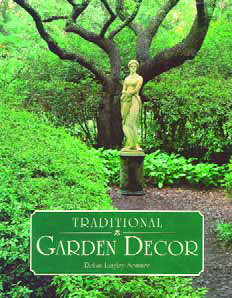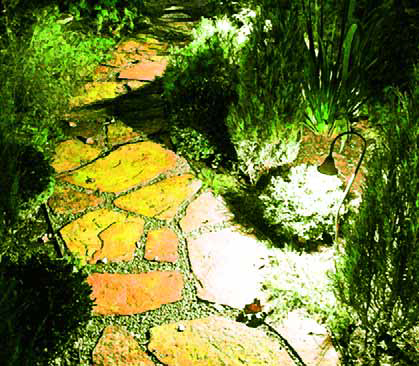ARTICLES
Advance Search
Aquatic Health
Aquatic Health, Fitness & Safety
Around the Internet
Aquatic Culture
Aquatic Technology
Artful Endeavors
Celebrity Corner
Life Aquatic
Must-See Watershapes
People with Cameras
Watershapes in the Headlines
Art/Architectural History
Book & Media Reviews
Commentaries, Interviews & Profiles
Concrete Science
Environment
Fountains
Geotechnical
Join the Dialogue
Landscape, Plants, Hardscape & Decks
Lighter Side
Ripples
Test Your Knowledge
The Aquatic Quiz
Other Waterfeatures (from birdbaths to lakes)
Outdoor Living, Fire Features, Amenities & Lighting
Plants
Ponds, Streams & Waterfalls
Pools & Spas
Professional Watershaping
Structures (Editor's Notes)
Travelogues & History
Water Chemistry
WaterShapes TV
WaterShapes World Blog
Web Links
Around the Internet
Aquatic Culture
Aquatic Technology
Artful Endeavors
Celebrity Corner
Life Aquatic
Must-See Watershapes
People with Cameras
Watershapes in the Headlines
I do much of my work in the residential market, and it's increasingly common for my clients to have relatively small yards for which they want something both unique and special. In those settings (and in larger ones as well, but often not as critically), I've found that it's the small touches that make the most difference. Frequently, it's these simple decorative elements that transform designs into unique compositions that reflect clients' personalities and gives their homes that special feeling. Yes, you can create terrific swimming pools and other watershapes and include wonderful hardscape or shade structures and landscaping in any project, but especially in compact spaces, the character of those elements may not be fully expressed or realized until you add these finishing touches. I recently found a wonderful book that shows
In the parlance of those who know best, it's time to discuss "mud" - the concrete material out of which most watershape shells are made. Mud enters the scene after the steel, plumbing, electrical conduits and forms have been placed and, in some jurisdictions, all work to that point has passed careful inspection. The concrete itself can take any of four forms: concrete block or poured-in-place concrete (neither of which is used very often), or gunite or shotcrete (far more commonly used). In my three decades of building watershapes, I've worked with all of these materials. If a very specific set of circumstances calls for the use of
In the parlance of those who know best, it's time to discuss "mud" - the concrete material out of which most watershape shells are made. Mud enters the scene after the steel, plumbing, electrical conduits and forms have been placed and, in some jurisdictions, all work to that point has passed careful inspection. The concrete itself can take any of four forms: concrete block or poured-in-place concrete (neither of which is used very often), or gunite or shotcrete (far more commonly used). In my three decades of building watershapes, I've worked with all of these materials. If a very specific set of circumstances calls for the use of
Those of us who are designers and builders of full-scale outdoor environments (you know who you are) face a distinct challenge: In our work for our clients, we are expected to provide the outline and details for a huge range of project elements, from watershapes and patios to plantings and walkways and more. That list, at least so far as clients are concerned, also includes appropriate lighting, but that is not always something on which we focus. Indeed, lighting design is seen as a specialty even by those who tackle almost every other project feature - and there's no problem with that unless
Those of us who are designers and builders of full-scale outdoor environments (you know who you are) face a distinct challenge: In our work for our clients, we are expected to provide the outline and details for a huge range of project elements, from watershapes and patios to plantings and walkways and more. That list, at least so far as clients are concerned, also includes appropriate lighting, but that is not always something on which we focus. Indeed, lighting design is seen as a specialty even by those who tackle almost every other project feature - and there's no problem with that unless
I've always believed that one of the keys to happiness is enjoying what you do for a living and savoring each day in one way or another. Yes, we all want to make good money and have the sense that we've risen to a place of status and respect within our profession and, yes, we all know that meaningful work provides many different types of rewards, but for me, the greatest of these accrue to those who don't simply work to live, but instead live to work. When I get up in the morning and assume my role as a watershape designer, I invariably greet each day and its tasks with joy. And it's not simply that I love this business (which I do); more important, it's that I genuinely, honestly appreciate my
I've always believed that one of the keys to happiness is enjoying what you do for a living and savoring each day in one way or another. Yes, we all want to make good money and have the sense that we've risen to a place of status and respect within our profession and, yes, we all know that meaningful work provides many different types of rewards, but for me, the greatest of these accrue to those who don't simply work to live, but instead live to work. When I get up in the morning and assume my role as a watershape designer, I invariably greet each day and its tasks with joy. And it's not simply that I love this business (which I do); more important, it's that I genuinely, honestly appreciate my
If there's one thing about the world of watershaping that never ceases to amaze me, it's the wide spectrum of skills, styles and project types that define the boundaries of what people engaged in this industry do for their clients. Recognizing that breadth and depth is always encouraging (as I've mentioned before in this space), but in today's marketplace it's becoming
If there's one thing about the world of watershaping that never ceases to amaze me, it's the wide spectrum of skills, styles and project types that define the boundaries of what people engaged in this industry do for their clients. Recognizing that breadth and depth is always encouraging (as I've mentioned before in this space), but in today's marketplace it's becoming
Some projects start out on the right foot and stay that way: the right client, the right ideas, the right combination of skills on the design/construction team and a setting that inspires everyone involved to bring his or her very best to the table. The project profiled here is a case in point and is very specifically an example of teamwork at its finest. The result is a tasteful design executed to near perfection in a project that’s beautiful visually while being extremely functional through the fun and luxury it affords the clients. All in all, it’s one of those rare and wonderful projects in which all the right notes were hit. Located on an island off the Connecticut coast, the property is a second home for fun-loving family that had the resources to create a great venue for outdoor gatherings. The site is indeed spectacular, seven acres in all graced by a beautiful 12-bedroom house and


















